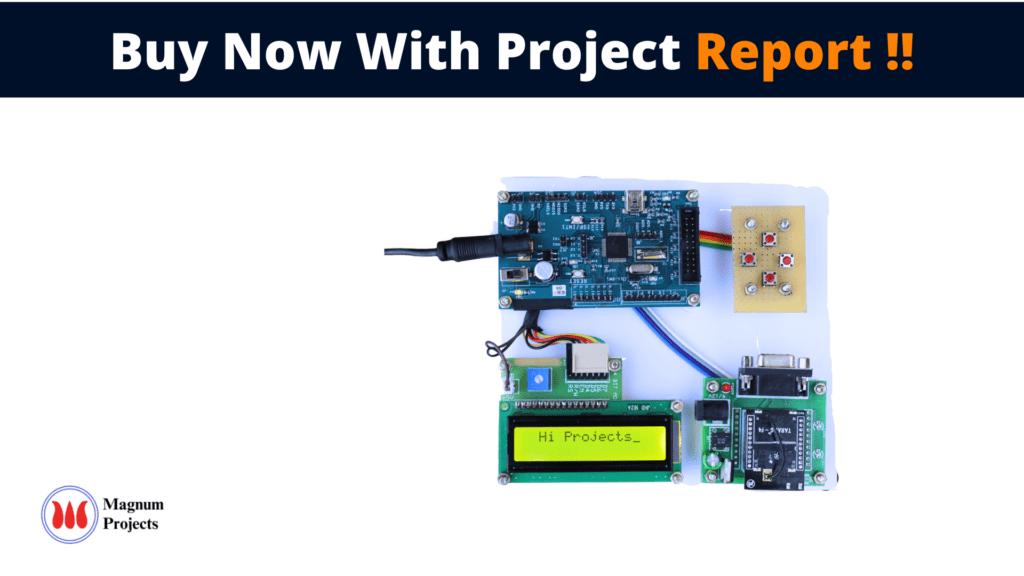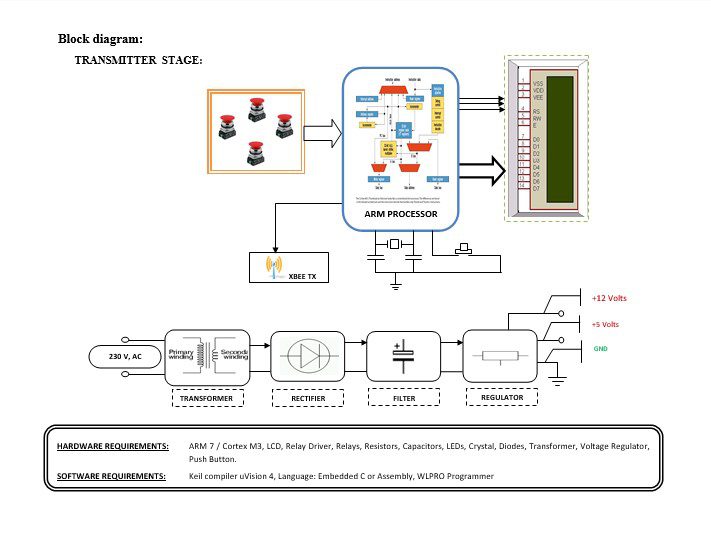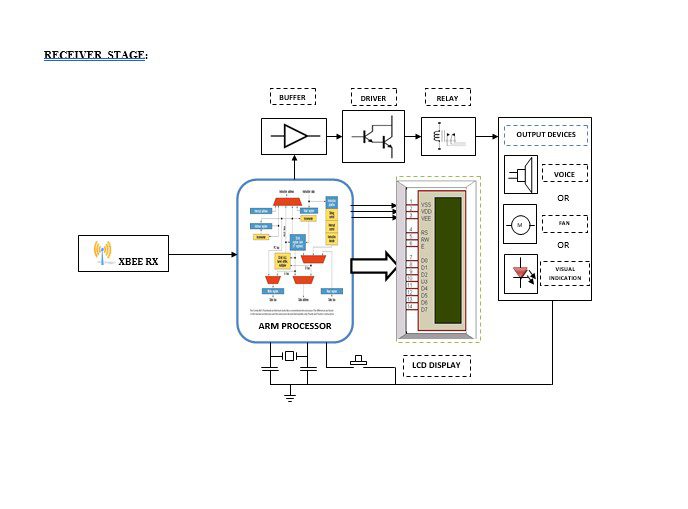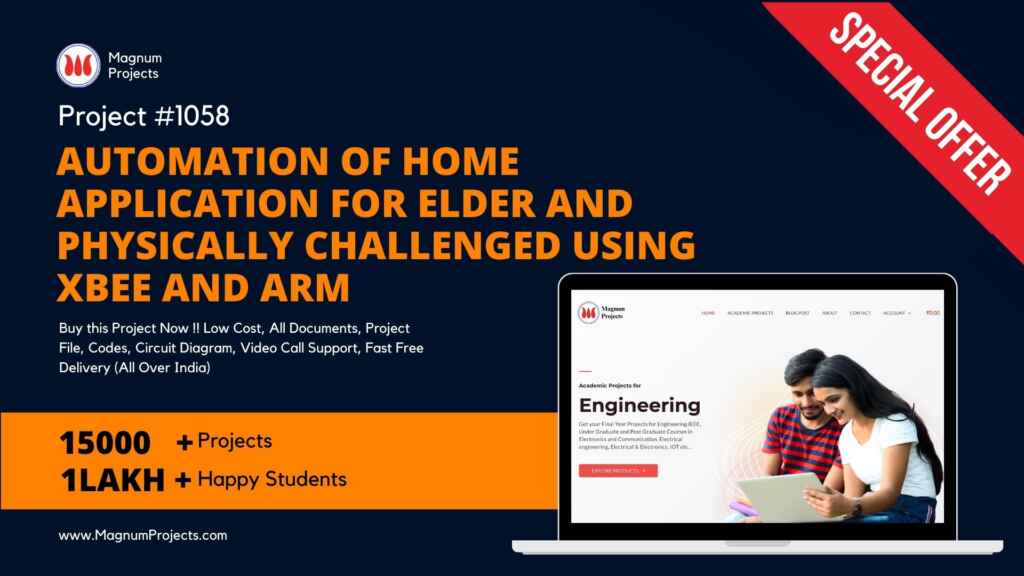Table of Contents
Introduction:


The world population shows a trend that the elderly population worldwide is increasing rapidly as a result of the increase in the average live expectancy of people. Caring for and supporting this growing population is a concern for governments and nations around the globe. Home automation is one of the major growing industries that can change the way people live. Some of these home automation systems target those seeking luxury and sophisticated home automation platforms; others target those with special needs like the elderly and the disabled. The aim of the reported Wireless Home Automation System (WHAS) is to provide those with special needs with a system that can respond to voice commands and control the on/off status of electrical devices, such as lamps, fans, television, etc, in the home. The system should be reasonably cheap, easy to configure, and easy to run. There have been several commercial and research projects on smart homes and switch systems. An integrated platform for home security, monitoring, and automation (SMA) from ARM. The system is a 7-inch touch screen that can wirelessly be connected to security alarms and other home appliances.




Block diagram explanation :
Power supply unit:
This section needs two voltages viz., +12 V & +5 V, as working voltages. Hence specially designed power supply is constructed to get regulated power supplies.
Zigbee technology:
ZigBee is the name of a specification for a suite of high-level communication protocols using small, low-power digital radios based on the IEEE 802.15.4 standard for wireless personal area networks (WPANs).
- A very low-cost, low power consumption two-way, wireless communication standard for automation, toys & PC peripherals.
- Low power consumption: 6 months to 5 years battery life for most applications.
- Low cost: At least half the cost of Bluetooth solutions.
- The high density of nodes per network: 250 nodes per network, multiple co-located networks.Data rate requirements: Few bits to 250kbps sufficient.
ARM processor:
ARM is a computer processor-based RISC architecture. A RISC-based computer design approach means ARM processors require significantly fewer transistors than typical processors in average computers. This approach reduces costs, heat, and power use. The low power consumption of ARM processors has made them very popular:
The ARM architecture (32-bit) is the most widely used in mobile devices, and the most popular 32-bit one in embedded systems.
ARM processor features include:
- Load/store architecture.
- An orthogonal instruction set.
- Mostly single-cycle execution.
- A 16×32-bit register
- Enhanced power-saving design.
Buffers:
Buffers do not affect the logical state of a digital signal (i.e. a logic 1 input results in a logic 1 output whereas logic 0 input results in a logic 0 output). Buffers are normally used to provide extra current drive at the output but can also be used to regularize the logic present at an interface.
Drivers:
This section is used to drive the relay where the output is the complement of input which is applied to the drive but the current will be amplified.
Relays:
It is an electromagnetic device that is used to drive the load connected across the relay and the o/p of the relay can be connected to the controller or load for further processing.
Methodology:
This project is an innovative and low-cost self-assistive technology that is used to facilitate the control of home appliances by using switches for the Elder/disabled people. This project is developed for people who are Elder peoples/physically disabled to lead an independent, confident, and enjoyable life. The main modules in this project are Key input to, the ARM controller unit and LCD and Zigbee.
The transmitter will be there with people who are Elder peoples /physically disabled and the receiver will be there at the device. The transmitter module has voice input, an ARM controller, and Zigbee as communication media. The receiver has Zigbee, an ARM controller, and devices. If an Operator gives a signal to make the device go ON or OFF, that information will be given to the ARM controller, then the ARM controller analyses the signal and sends information to the receiver which is present at the device end via Zigbee. At the receiver, the Zigbee receives a signal which was transmitted from the transmitter and sends that to the ARM controller. After receiving the signal the ARM controller will switch ON or OFF the devices based on the user signal which was received from the transmitter.
Advantages:
- An Elder /handicapped person with switches can use this and become Independent.
- Requires less wiring because of the Zigbee section.
- Less Hardware requires i.e. compact.
- Economical.
- Reduce manpower.
Disadvantages:
- One-time investment cost.
Applications:
- This project can be implemented in Defense, Hospitals, Schools, Companies, etc…..
- This project can be implemented in industrial applications.
- This project can be implemented to control the voice-operated wheelchair




